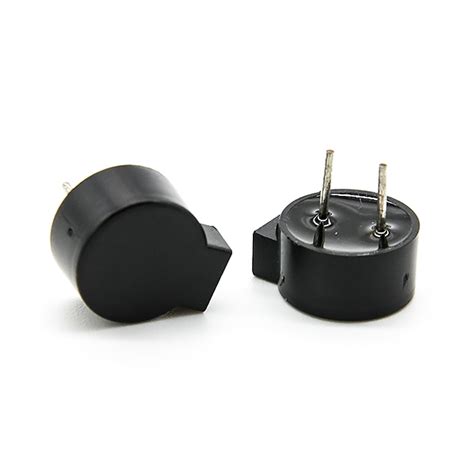Introduction to Piezo and Magnetic Buzzers
In today’s world of electronic devices, buzzers play a crucial role in providing audible feedback and alerts. Two common types of buzzers used in various applications are piezo buzzers and magnetic buzzers. While both serve the purpose of generating sound, they differ in their working principles, sound quality, and other characteristics. In this article, we will explore the differences between piezo and magnetic buzzers, their advantages and disadvantages, and their suitability for different applications.
What is a Piezo Buzzer?
A piezo buzzer, also known as a piezoelectric buzzer, is a sound-generating device that relies on the piezoelectric effect. It consists of a piezoelectric material, typically a ceramic or crystal, that vibrates when an electrical current is applied to it. The vibration of the piezoelectric material creates sound waves, which are then amplified by the buzzer’s housing.
Advantages of Piezo Buzzers
- Low power consumption
- Compact size
- Wide frequency range
- High sound pressure level
- Durability and long lifespan
Disadvantages of Piezo Buzzers
- Limited sound quality
- Narrow viewing angle
- Susceptible to temperature changes
- Higher cost compared to magnetic buzzers
What is a Magnetic Buzzer?
A magnetic buzzer, also referred to as an electromagnetic buzzer, generates sound through the interaction between an electromagnet and a flexible diaphragm. When an electrical current is applied to the electromagnet, it creates a magnetic field that attracts and repels the diaphragm, causing it to vibrate and produce sound.
Advantages of Magnetic Buzzers
- Low cost
- Simple construction
- Good sound quality
- Wide viewing angle
- Less affected by temperature changes
Disadvantages of Magnetic Buzzers
- Higher power consumption compared to piezo buzzers
- Larger size
- Limited frequency range
- Lower sound pressure level
Comparison of Piezo and Magnetic Buzzers
To better understand the differences between piezo and magnetic buzzers, let’s compare them based on various parameters:
| Parameter | Piezo Buzzer | Magnetic Buzzer |
|---|---|---|
| Working Principle | Piezoelectric effect | Electromagnetic effect |
| Sound Quality | Limited | Good |
| Frequency Range | Wide (up to 100 kHz) | Limited (up to 10 kHz) |
| Sound Pressure Level | High | Low |
| Power Consumption | Low | High |
| Size | Compact | Larger |
| Cost | Higher | Lower |
| Durability | High | Moderate |
| Temperature Sensitivity | High | Low |
Applications of Piezo and Magnetic Buzzers
Both piezo and magnetic buzzers find applications in various fields, depending on their specific characteristics and requirements. Some common applications include:
Piezo Buzzer Applications
- Alarm systems
- Smoke detectors
- Medical devices
- Industrial equipment
- Automotive electronics
Magnetic Buzzer Applications
- Toys and novelty items
- Doorbells and chimes
- Telephone ringers
- Timers and alarms
- Low-cost electronic devices

Choosing the Right Buzzer for Your Application
When selecting a buzzer for your application, consider the following factors:
- Sound quality and volume requirements
- Power consumption constraints
- Size and space limitations
- Cost considerations
- Environmental factors (temperature, humidity, etc.)
Based on these factors, you can choose between a piezo buzzer and a magnetic buzzer that best suits your needs.
Frequently Asked Questions (FAQ)
1. Can piezo buzzers be used for music playback?
While piezo buzzers are capable of producing a wide range of frequencies, their sound quality is limited compared to speakers or other audio devices. They are better suited for simple tones and alerts rather than music playback.
2. Are magnetic buzzers louder than piezo buzzers?
In general, piezo buzzers have a higher sound pressure level (SPL) compared to magnetic buzzers. However, the perceived loudness also depends on factors such as the buzzer’s size, housing design, and driving circuitry.
3. Can I replace a piezo buzzer with a magnetic buzzer, or vice versa?
Replacing one type of buzzer with another may not always be straightforward. Piezo and magnetic buzzers have different electrical characteristics and may require different driving circuits. It’s essential to consider the specific requirements of your application before making a substitution.
4. How do I drive a piezo or magnetic buzzer?
To drive a piezo or magnetic buzzer, you typically need a microcontroller or a dedicated buzzer driver circuit. The buzzer is connected to the appropriate output pins, and the microcontroller generates the necessary signals to control the buzzer’s frequency and duration.
5. What is the lifespan of piezo and magnetic buzzers?
Piezo buzzers generally have a longer lifespan compared to magnetic buzzers due to their solid-state construction and lack of moving parts. However, the actual lifespan depends on factors such as operating conditions, driving voltage, and environmental factors.
Conclusion
Piezo and magnetic buzzers are both valuable components in the world of electronic devices, offering low-cost and efficient sound generation solutions. While piezo buzzers excel in terms of power efficiency, wide frequency range, and durability, magnetic buzzers offer better sound quality and cost-effectiveness. The choice between the two depends on the specific requirements of the application, such as sound quality, volume, power consumption, and budget constraints.
By understanding the differences between piezo and magnetic buzzers, engineers and designers can make informed decisions when selecting the appropriate buzzer for their projects. Whether it’s for alarms, notifications, or audible feedback, both piezo and magnetic buzzers have their place in the diverse landscape of electronic devices.
As technology continues to advance, we can expect further improvements in buzzer design and performance, enabling even more innovative and efficient sound generation solutions. By staying informed about the latest developments in piezo and magnetic buzzer technology, engineers and designers can create products that effectively communicate with users through sound, enhancing the overall user experience.

No responses yet